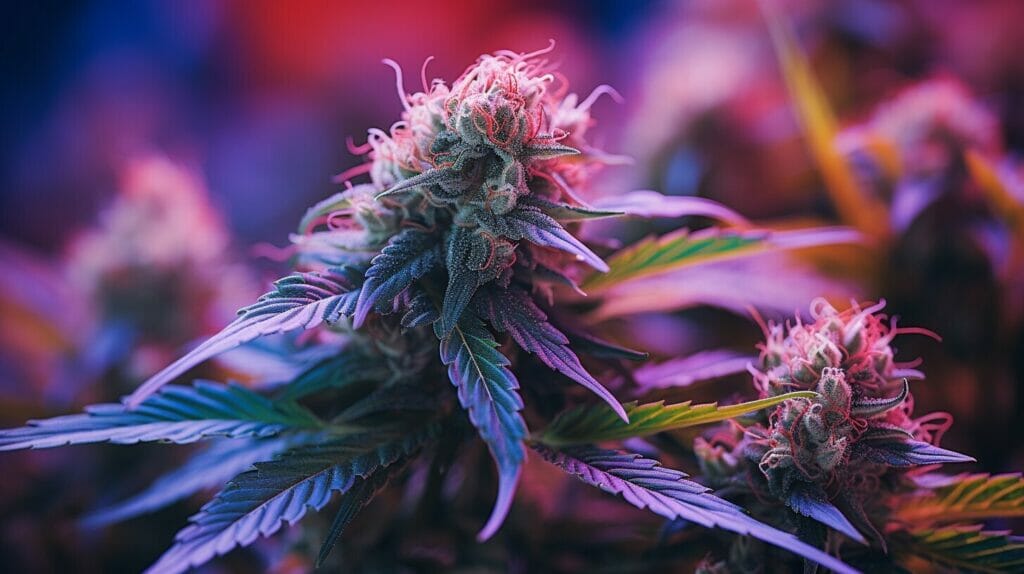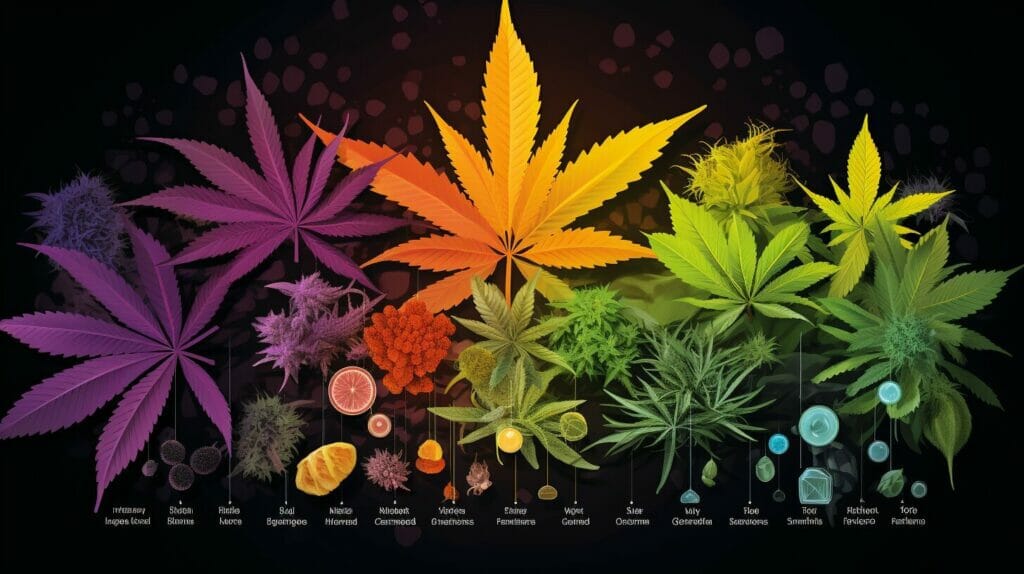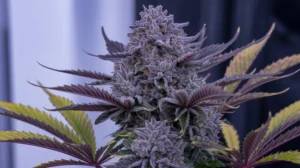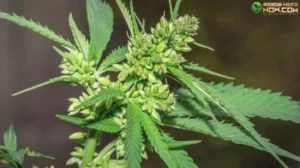Exploring the Role of Terpenes in Cannabis & Their Impact on the High

When it comes to cannabis, most people tend to focus solely on the cannabinoid compounds, such as THC and CBD. However, terpenes are another group of compounds found in cannabis that should not be overlooked. Terpenes are responsible for the distinct aroma and flavor profile of different cannabis strains, but they also play a significant role in the overall experience and psychoactive properties of cannabis.
Terpenes are organic compounds that are found in a variety of plants, including cannabis. They are aromatic and flavorful, and they work in unison with other compounds in cannabis to create what is known as the “entourage effect.” The entourage effect refers to the way in which different compounds in cannabis work together to enhance each other’s effects.
When it comes to the role of terpenes in cannabis, they are believed to contribute to the overall experience and psychoactive properties of the plant. Different terpenes can produce different sensations and alter or enhance the high. For example, some terpenes may produce a calming effect, while others may be energizing or uplifting.
Key Takeaways:
- Terpenes are organic compounds found in cannabis that contribute to its distinct aroma and flavor profile
- Terpenes work in unison with other compounds in cannabis to create the entourage effect
- Terpenes are believed to play a significant role in the overall experience and psychoactive properties of cannabis
- Different terpenes can produce different sensations and alter or enhance the high
Understanding Terpenes in Cannabis
Terpenes are organic compounds found in various plants, including cannabis. They are responsible for the distinctive aromas and flavors that different strains of cannabis possess. But terpenes do more than affect the taste and smell of cannabis—they also play a significant role in the overall cannabis experience. Understanding terpenes is crucial to understanding how cannabis works.
Terpenes work in conjunction with other compounds in cannabis, such as cannabinoids, to produce what is known as the entourage effect. The entourage effect is the idea that all the compounds in cannabis work together to produce a more potent effect than any individual compound could on its own. This is why full-spectrum cannabis products are often preferred over those that contain only isolated compounds.
There are more than 100 different terpenes found in cannabis, each with its own unique properties. Some of the most common terpenes found in cannabis include:
| Terpene | Flavor/Smell | Effects |
|---|---|---|
| Myrcene | Musky, earthy, herbal | Sedative, relaxing, anti-inflammatory |
| Pinene | Pine, woodsy | Alertness, memory retention, anti-inflammatory |
| Limonene | Citrusy, lemony | Elevated mood, stress relief, anti-fungal |
These terpenes can have a significant impact on the overall cannabis experience. For example, strains high in myrcene are often more sedative and relaxing, while those high in limonene may be more uplifting and energizing. Knowing the terpene profile of a particular strain can help users choose the right strain for their needs.
In addition to their impact on the high, terpenes also have potential therapeutic benefits. Some terpenes, such as beta-caryophyllene, have anti-inflammatory properties, while others, like linalool, have been shown to have anti-anxiety effects. As research into cannabis continues, more is being discovered about the potential benefits of terpenes and how they can be harnessed for medicinal purposes.

Overall, understanding terpenes in cannabis is essential for anyone looking to get the most out of their cannabis experience. By paying attention to the terpene profile of different strains, individuals can tailor their cannabis use to their specific needs and preferences. And by harnessing the potential therapeutic benefits of terpenes, cannabis may become an even more valuable tool in the world of medicine.
The Effects of Terpenes on the Cannabis Experience
Terpenes are essential oils found in cannabis plants that contribute to the plant’s unique aroma and flavor profile. However, terpenes play a much more significant role than providing a sensory experience. They can also have a significant impact on the high produced by cannabis consumption.
Each strain of cannabis has a specific terpene profile that can produce different psychoactive effects and sensations. Terpenes work in conjunction with cannabinoids to produce the overall cannabis experience.
For example, the terpene limonene, commonly found in strains like Super Lemon Haze, has been known to produce an energizing and uplifting high, while the terpene myrcene, found in strains like Granddaddy Purple, can produce a more sedative and relaxing high.
Terpenes can also enhance or diminish certain effects of cannabis consumption. For instance, the terpene caryophyllene has been known to reduce anxiety and stress, making it an ideal terpene for those with anxiety disorders.
Furthermore, the presence of certain terpenes can alter the high produced by cannabis, making it more intense or longer-lasting. For example, the terpene pinene can counteract the effects of THC, making the high less intense and shorter.
Overall, understanding the effects of terpenes on the cannabis experience can help individuals choose strains that can produce the desired effects. By selecting strains with specific terpene profiles, consumers can tailor their experience and achieve the desired effects.

Terpenes and Their Influence on the High in Marijuana
Terpenes play a critical role in shaping the high when consuming marijuana. With over 200 terpenes found in cannabis, these compounds interact with other elements to produce a unique and personalized experience. It is vital to understand how different terpenes can affect the intensity and duration of the high, providing the user with an enhanced or diminished experience.
When it comes to terpenes in marijuana and their influence on the high, it’s important to note that different strains have varying levels of terpenes. This is due to the different growing environments and techniques used in producing various strains. Therefore, the type of strain one uses can significantly impact the type of terpenes present and ultimately affect the high.
For instance, myrcene is a terpene commonly found in indica strains, and it can produce a sedative effect on the body. Limonene, on the other hand, is a terpene typically found in sativa strains and can produce an energetic and uplifting effect on the mind.
Another example is linalool, which has a floral scent and is found in both sativa and indica strains. It is known to produce a calming effect on the mind and body, making it an excellent option for individuals with anxiety or trouble sleeping.
Ultimately, the presence and type of terpenes in marijuana can potentially enhance or diminish certain effects, leading to a unique and personalized experience for the user.

Understanding the influence of terpenes on the high in marijuana is essential to optimize the experience. By exploring different strains and identifying the specific terpenes present, individuals can potentially tailor their high to meet their desired effects. However, it is important to note that the effects of terpenes can vary from person to person, and there is no one-size-fits-all solution.
As research continues to evolve, we will gain a better understanding of how terpenes interact with other compounds in cannabis and how they can potentially offer therapeutic benefits beyond the high.
Common Terpenes Found in Cannabis
Terpenes are a diverse group of compounds that give cannabis strains their unique flavors and aromas. In addition to their sensory characteristics, different terpenes have been found to have varying effects on the body and mind.
One of the most common terpenes found in cannabis is myrcene. This terpene has a musky, earthy aroma and is often associated with sedative effects. It is believed to work synergistically with THC, enhancing its psychoactive properties and promoting relaxation.

Limonene is another well-known terpene found in many cannabis strains. As its name suggests, it has a citrusy aroma and is believed to have uplifting and anti-anxiety effects. Some studies have also suggested that limonene may have therapeutic potential as an anti-inflammatory and anti-tumor agent.
Pinene, which has a piney aroma, is believed to have energizing and uplifting effects. It may also have anti-inflammatory properties and has been used in traditional medicine for centuries for its healing properties.
Other common terpenes found in cannabis include caryophyllene, which has a spicy aroma and is believed to have pain-relieving effects, and linalool, which has a floral aroma and is often associated with calming and relaxing effects.
While the effects of these terpenes may vary depending on the individual and the specific strain of cannabis, their presence is believed to play a significant role in shaping the overall cannabis experience. By understanding the characteristics of different terpenes, consumers can better select strains that align with their desired effects.
Terpenes and the Psychoactive Properties of Cannabis
Terpenes are not only responsible for the aroma and flavor of cannabis but also play a significant role in determining the psychoactive properties of the plant. When combined with cannabinoids, terpenes can influence the intensity and duration of the high.
Research has shown that terpenes can interact with the endocannabinoid system in the body, affecting the way cannabinoids bind to receptors. For example, the terpene myrcene can increase the permeability of cell membranes, allowing for faster absorption of cannabinoids. This can result in a faster onset of the high and a more intense experience.
Another terpene, limonene, has been found to have anti-anxiety properties. When combined with THC, it can counteract the anxiety-inducing effects of the cannabinoid and promote a more relaxing experience.
Beta-caryophyllene, another common terpene in cannabis, has been shown to have a direct effect on the endocannabinoid system. It binds directly to CB2 receptors, which can lead to anti-inflammatory and pain-relieving effects.
Other terpenes found in cannabis, such as alpha-pinene and linalool, have been associated with increased alertness and relaxation, respectively. The combination of different terpenes in a strain can result in a unique and nuanced cannabis experience.

Understanding the role of terpenes in the psychoactive properties of cannabis can help consumers make more informed decisions when choosing strains. By paying attention to the types of terpenes present in a strain, cannabis users can tailor their experience to their desired effects and preferences.
Terpenes in Cannabis and Their Effects
Terpenes in cannabis are responsible for more than just flavor and aroma. The effects of these compounds on the body and mind are diverse and can vary from strain to strain. Understanding the specific effects of different terpenes can help users tailor their cannabis experience to their desired effect.
Some common terpenes found in cannabis and their effects include:
| Terpene | Effect |
|---|---|
| Limonene | Elevated mood, stress relief, and improved digestion |
| Myrcene | Sedative, relaxing, and a natural analgesic |
| Pinene | Increased alertness, focus, and memory retention |
| Linalool | Calming, stress relief, and anti-inflammatory properties |
These terpenes not only contribute to the overall experience of using cannabis, but they also have potential therapeutic benefits. For example, linalool has been studied for its anti-inflammatory properties, while limonene has been known to have anti-anxiety effects.
Moreover, terpenes can also affect the intensity and duration of the high. For instance, a strain high in the terpene myrcene can provide a more relaxing and sedative effect, whereas a strain high in limonene can create an energetic and uplifting effect.
Overall, understanding the various terpenes found in cannabis and their effects is crucial to tailoring a cannabis experience to individual preferences. Whether for recreational or therapeutic use, becoming knowledgeable in this area can enhance the overall experience and create a more personalized approach to cannabis use.

The Influence of Terpenes on the High: Case Studies and Experiences
While scientific research on terpenes is still in its infancy, many cannabis users have reported experiencing the effects of specific terpenes on their high. Here are a few case studies and experiences that demonstrate the influence terpenes can have on the overall cannabis experience:
“I always thought that the high from marijuana was all about THC, but after trying a strain with high levels of limonene, I realized that terpenes play a big role too. The limonene gave me a really uplifting and energetic high, which was totally different from what I was used to. It was like a mood boost in a joint!”
Another cannabis user reports:
“I have chronic pain and anxiety, and I find that strains with high levels of myrcene really help me to relax and let go of my tension. One time, I tried a strain that was supposed to be really calming, but it didn’t have much myrcene in it. Even though it was supposed to be good for anxiety, I found that I was still really tense and couldn’t relax.”
These case studies show that terpenes can have a significant influence on the high and the overall cannabis experience. It’s not just about THC levels or indica vs. sativa; the specific terpenes in a strain can make a big difference.
Of course, everyone’s experience is different, and what works for one person might not work for another. That’s why it’s important to experiment with different strains and see what works best for you.

Ultimately, the key takeaway here is that terpenes are an important part of the cannabis plant, and they play a crucial role in shaping the overall experience. By paying attention to the specific terpenes in a strain, you can get a better idea of what kind of high to expect and how it might affect you. So the next time you’re shopping for cannabis, don’t just look at the THC percentage – take a closer look at the terpene profile too.
Conclusion
Terpenes play a vital role in shaping the experience of cannabis. They enhance the psychoactive properties of the plant and contribute to the unique sensations felt by those who consume it. Understanding terpenes in cannabis is essential for maximizing the benefits of the plant and its effects on the mind and body.
In this article, we have explored various types of terpenes found in cannabis and their impact on the high. From enhancing effects to reducing anxiety, terpenes have a significant influence on the plant’s overall experience. Furthermore, we have discussed the potential therapeutic benefits of terpenes and how they can impact the mind and body beyond the high.
By showcasing real-life case studies and experiences, we have seen how terpenes can influence the high in unique and unpredictable ways. However, it is essential to remember that everyone’s experience with cannabis is different, and the effects of terpenes may vary from person to person.
Indeed, terpenes represent a fascinating area of study within the realm of cannabis research. Their impact on the plant’s overall experience is undeniable, and their potential therapeutic benefits warrant further exploration. As the cannabis industry continues to evolve, understanding terpenes and their impact on the high will become increasingly crucial.
FAQ
Q: What are terpenes and why are they significant in cannabis?
A: Terpenes are aromatic compounds found in cannabis that contribute to its flavor and aroma. They also play a role in the psychoactive properties of cannabis, enhancing or altering the high.
Q: What is the entourage effect?
A: The entourage effect refers to the synergistic interaction between various compounds in cannabis, including terpenes, cannabinoids, and other phytochemicals. This interaction is believed to enhance the overall effects of cannabis.
Q: How do terpenes affect the cannabis experience?
A: Different terpenes can produce different sensations and enhance or alter the high. They can contribute to feelings of relaxation, focus, or upliftment, among other effects.
Q: Do terpenes have a specific influence on the high in marijuana?
A: Yes, terpenes can influence the high when consuming marijuana. They may enhance certain effects, such as relaxation or euphoria, or diminish others, such as anxiety or sedation.
Q: What are some common terpenes found in cannabis?
A: Some common terpenes found in cannabis strains include limonene, myrcene, pinene, and linalool. Each of these terpenes has unique characteristics and can shape the overall high and experience.
Q: How do terpenes contribute to the psychoactive properties of cannabis?
A: Terpenes interact with cannabinoids in cannabis and can influence the intensity and duration of the high. They are believed to modulate the effects of cannabinoids and contribute to the overall psychoactive experience.
Q: What are the effects of terpenes in cannabis?
A: Various terpenes can have different effects on the body and mind. Some terpenes may have potential therapeutic benefits, such as reducing inflammation or promoting relaxation, beyond their impact on the high.
Suggested Articles
;)
;)
;)




 11 Dec 2025
11 Dec 2025  5 min read
5 min read


 January 06, 2024
January 06, 2024 


RESPONSES (0)
No responses yet. Be the first to respond!